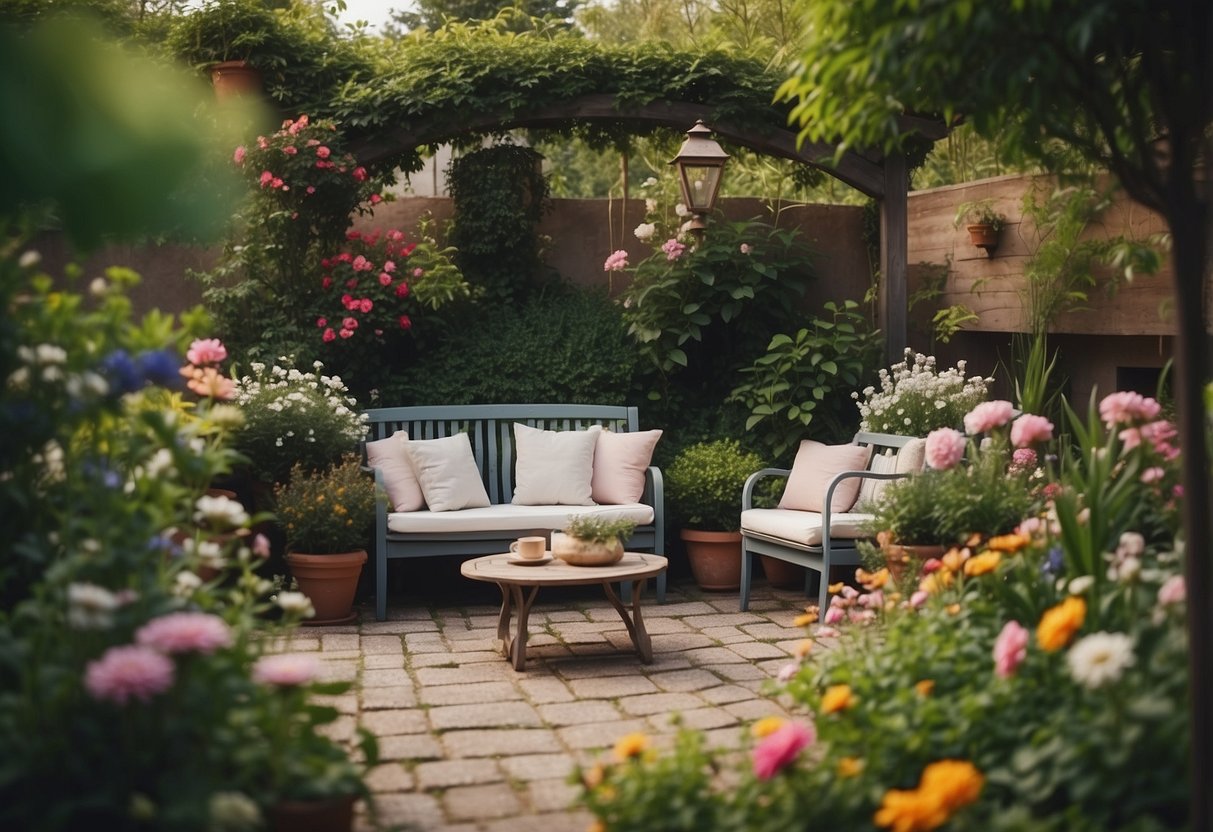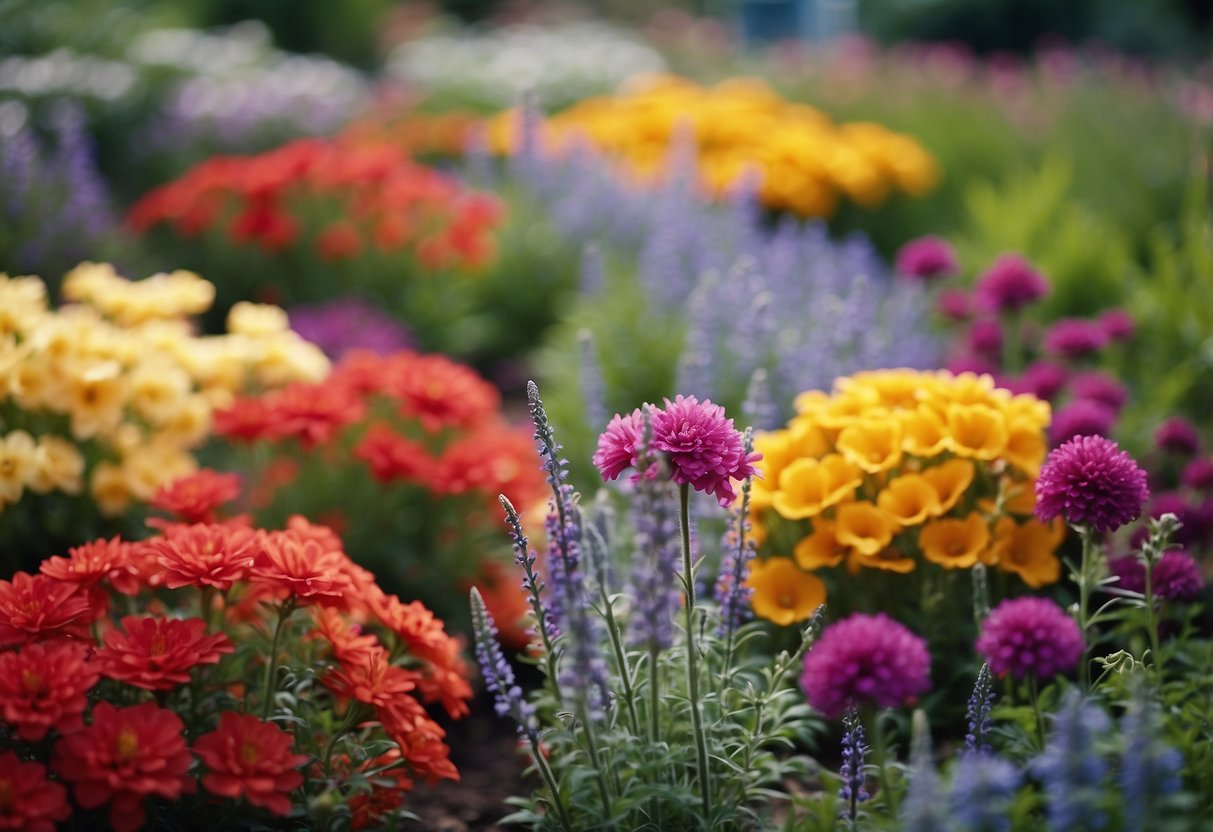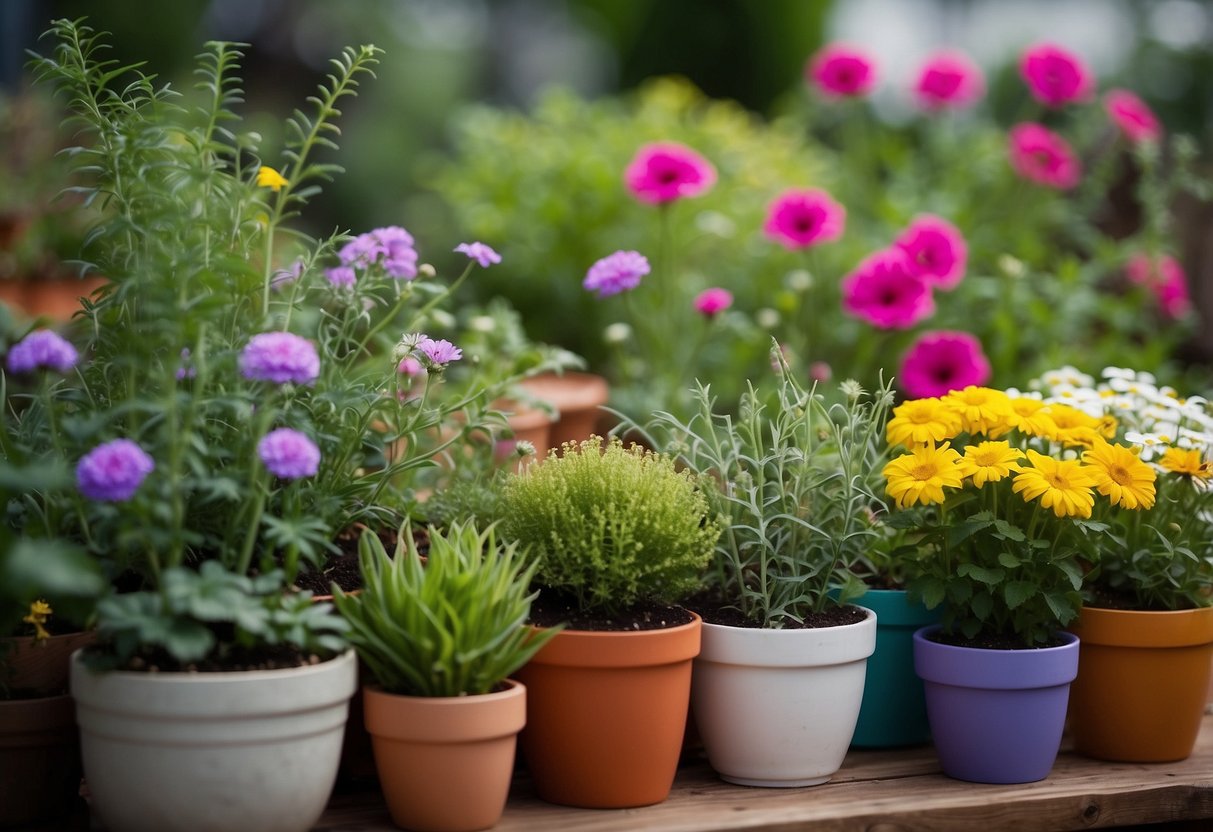Small Garden Ideas for Every Season: Year-Round Inspiration
Having a small garden doesn’t mean you can’t enjoy it all year round. With a bit of planning and creativity, you can transform even the tiniest garden into a charming and functional space. How can you make the most of your small garden regardless of the season?

Every season offers a unique opportunity to refresh and enhance your garden. From colorful blooms in spring to cozy seating areas for summer evenings, there are many ways to maximize your outdoor space. By considering the changing seasons, you can ensure your garden remains a delightful retreat throughout the year.
1) Potted Herb Garden

A potted herb garden is perfect for small spaces. You can grow basil, parsley, and tarragon together in one large container.
For indoor gardening, place herbs like mint and thyme by a window. They enjoy natural light and will thrive.
Try using colorful pots to make your garden look beautiful and inviting.
2) Perennial Flower Beds

Perennial flower beds are a fantastic choice for adding long-lasting beauty to your garden.
These flowers come back every year, saving you time and effort. Some great options include chrysanthemums, snapdragons, and sedums, which bloom in autumn.
You can also choose plants that offer vibrant fall foliage, such as Japanese maples and hydrangeas. Adding these to your garden will ensure it looks stunning throughout the year. For more ideas, check out perennial flower garden designs.
3) Vertical Vegetable Garden

A vertical vegetable garden is perfect for small spaces. You can grow many kinds of vegetables by using wall-mounted containers or tall trellises.
Green beans, often known as pole beans, are a great choice and can climb up to 8-10 feet high.
Try creating a PVC pipe herb garden for herbs or small veggies like radishes. This setup can be hung on any wall and adds a fun, artsy feel to your garden.
4) Seasonal Container Gardening

Seasonal container gardening lets you enjoy beautiful plants all year long. Each season offers unique opportunities to refresh your planters with appropriate plants.
In the fall, you can use colorful foliage like Coprosma ‘Tequila Sunrise’ or ‘Nagoya’ kale for a vivid display. In winter, try evergreens and holly for a festive look.
Year-round, container gardening allows you to easily switch plants and move them as needed to keep your garden looking great every season. It’s an easy and versatile way to brighten up any space.
5) Small Fruit Trees

Small fruit trees are a great way to add fresh produce to your garden. They don’t need much space, making them perfect for small areas.
Dwarf apple trees like the Cameron Select are very popular. They grow 8-10 feet tall and are easy to care for.
Consider a dwarf pomegranate tree. It offers beautiful flowers and tasty fruits. These trees can thrive even in limited spaces.
Another option is the compact Calamondin orange tree, which provides small oranges perfect for snacks.
6) Spring Bulb Garden

A spring bulb garden adds vibrant color after winter. Plant bulbs like tulips, daffodils, and crocuses for early blooms. Group your bulbs together for a more striking display.
Add flowers with variegated foliage such as tulips ‘New Design’ and ‘Red Riding Hood’ to keep your garden interesting even when flowers fade. Mix in small shrubs or perennials for continuous beauty.
For best results, plant bulbs in generous groups. For example, tulips look best in groups of at least 12 bulbs. This will ensure your spring garden looks full and lively.
7) Autumn Chrysanthemum Corner

Chrysanthemums, or mums, are perfect for adding color to your garden in the fall. These flowers come in many varieties and colors, which can brighten up any small garden space.
Plant mums in a sunny spot where they can get full sun. Keep the soil moist but not soggy by watering regularly.
Consider varieties like the ‘Beverly Orange’ which blooms beautifully in mid-fall. Don’t forget to mulch around your mums to help them retain moisture and stay healthy. Explore different options like spider mums with their unique flower shapes for added interest.
8) Winter Blooming Camellias

Winter-blooming camellias can bring your garden to life, even in the cold months. These beautiful shrubs, like Camellia japonica, offer large, colorful flowers from late winter to spring.
Camellias need well-drained soil and a spot with good airflow. Their dark green leaves and vibrant flowers make them perfect for adding winter color to small gardens. To ensure healthy growth, give them space to spread as they can reach up to 12 feet tall.
Enjoy the beauty and ease of Camellia sasanqua blooms all winter long.
9) Shade-Loving Hostas

Hostas are perfect for adding greenery to your shady spots. They come in various sizes and colors. Many small hosta varieties thrive in deep shade. For example, Blue Mouse Ears has unique blue-green leaves that add charm to any garden.
Another great choice is Pandora’s Box. It features creamy white foliage with blue-green edges. This miniature hosta is ideal for small spaces.
You can also try Halcyon, known for its stunning blue-tinted leaves. It prefers deep shade to keep its vibrant color. These hostas will brighten up your shade garden effortlessly.
10) Succulent Rock Garden

A succulent rock garden can add beauty and texture to your yard. Use stacked rocks to create height and depth. Low-growing succulents look great nestled between flat stones.
Choose succulents that thrive in rocky areas like Euphorbia and Echeveria. They love the tiny crevices between stones.
Try creating a small succulent kokedama or convert an old aquarium into a unique succulent garden. These ideas fit well in small spaces and add a fresh look to any season. For more inspiration, check out these succulent garden ideas.
Understanding Seasonal Gardening

Seasonal gardening involves planning and planting different types of plants throughout the year to ensure your garden looks great and remains productive. This approach requires attention to seasonal changes and climate considerations.
The Importance of Seasonal Planning
Planning your garden according to the seasons is crucial for growth and productivity. Each season comes with unique challenges and opportunities. For example, you can grow heat-tolerant plants like tomatoes and peppers in summer and cold-hardy vegetables such as kale and Brussels sprouts in winter. Think about blooming flowers, vegetables, and shrubs, and create a rotating plan.
Creating a seasonal garden also allows you to use tools like cold frames, greenhouses, and mulch. These tools help extend the growing season and protect your plants from extreme weather. By planning ahead, you can ensure your garden remains colorful and lush all year. Hortisketch garden planners can be very useful for visualizing your garden’s layout.
Climate Considerations
Understanding your local climate is necessary for choosing the right plants for each season. Your garden’s needs will vary based on whether you live in a warm, temperate, or cold region. For instance, people in cooler climates might need to focus on early spring plants like lettuce and peas, while those in warmer climates can plant later in the season.
Use the USDA Plant Hardiness Zone Map to determine which plants will thrive in your location. Incorporate native plants and heat-tolerant varieties to handle hot summers, and opt for cold-hardy species for winter. This approach ensures that your garden remains vibrant and healthy throughout the changing seasons, making it easier to manage and enjoy.
For more on adapting your gardening strategy to the seasons, check out the Ultimate Guide to Seasonal Gardening.
Designing a Small Garden for Spring

Spring is a vibrant time to freshen up your small garden with blooming flowers and strategic design to maximize space. You can choose colorful, seasonal flora and smart layouts to make the most of every square inch.
Spring Flowers and Foliage
Spring brings a burst of colors and scents to your garden. Choose flowers like tulips, daffodils, and hyacinths that thrive in early spring. These flowers not only look beautiful but also attract pollinators like bees and butterflies.
Add foliage plants such as hostas and ferns. They provide a lush, green background to highlight the colorful blossoms. Consider planting pansies and snapdragons for a splash of early color that can handle the cooler temperatures.
If space is limited, go for compact and fast-growing varieties. These plants won’t take over your garden but will still give you a rich display of spring colors. Hanging baskets and vertical planters are great for adding layers and depth without using up precious ground space.
Maximizing Space in Small Gardens
Small gardens require clever design to make the most of limited space. Start by using vertical elements like trellises or arbors to grow climbing plants. These structures not only save space but also add an extra layer of visual interest.
Use containers and pots to create a mobile garden. This allows you to rearrange plants throughout the season to catch the best sunlight and keep the garden looking fresh. Consider tiered plant stands for a multi-level garden effect.
Incorporate multi-functional furniture like a garden bench with built-in planters. This helps keep the space tidy and functional. Opt for narrow, winding pathways to make the garden feel larger and more intriguing.
With these tips, your small garden can be both beautiful and efficient, making spring a delightful season to enjoy your outdoor space.
Summer Garden Care Tips

Caring for your garden in the summer involves proper watering and irrigation, along with effective strategies for dealing with pests and weeds. These tips will help keep your garden thriving in the warmest months.
Watering and Irrigation
During summer, your garden needs consistent watering. It’s best to water in the early morning or late evening to avoid evaporation. This helps the water reach the roots more effectively. Aim for 1-2 inches of water per week for most plants.
Drip irrigation systems are highly efficient for small gardens. They deliver water directly to the roots, minimizing waste. If you use a sprinkler, make sure it covers all areas evenly. Check soil moisture regularly; if the top inch is dry, it’s time to water.
Mulching is another great way to retain moisture. As it decomposes, mulch adds nutrients to the soil and keeps it cool. Apply a layer of mulch around your plants to reduce water evaporation. This practice can greatly improve the health of your garden.
Dealing with Pests and Weeds
Summer can bring many kinds of pests. To manage them, regularly inspect your plants for signs of damage or insects. If you spot pests, consider using natural remedies like neem oil or insecticidal soap. These are effective and environmentally friendly.
Weeds are another challenge, as they compete with your plants for nutrients and water. Remove weeds regularly to keep your garden healthy. Pull them up as soon as you see them to prevent them from spreading.
You can also use mulch to reduce weed growth. A thick layer of mulch can block sunlight, making it harder for weeds to germinate. Organic mulches like straw or wood chips are excellent choices. Remember, dealing with pests and weeds promptly keeps your plants strong and productive.
By following these summer garden care tips, your small garden can flourish throughout the season.







